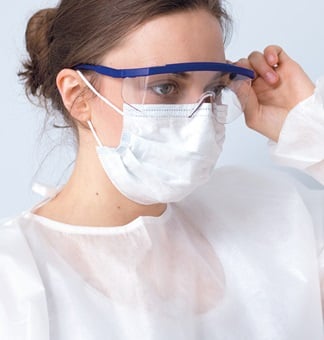Hygiene Measures


As the OR belongs to the areas of a hospital with an increased risk of infection, frequently touched and near-patient surfaces as well as floors have to be cleaned and disinfected regularly [3-5]. Therefore, the Centers for Disease Control and Prevention (CDC) recommend cleaning and disinfection of high-touch surfaces, surfaces inside of the surgical field, as well as contaminated surfaces outside the surgical field before and after each operation [5]. The practical guideline for the reprocessing of operating rooms, published in 2024 by the Federal Association for Hygiene and Hospital Cleaning (BHUK) in Germany, also provides very specific recommendations on the required procedures [4].
In addition, cleaning and disinfection of all horizontal surfaces, contaminated vertical surfaces (e.g., walls), utility areas as well as the entire floor must be carried out at the end of the daily surgical program. Moreover, low-touch surfaces like ceilings and walls must also be cleaned and disinfected on a scheduled basis. For disinfection, only facility-approved disinfectants should be used [5].
Cleaning of the OR is performed by environmental cleaning staff and requires special training. Qualified surgical cleaning staff are indispensable for the smooth daily OR program and strongly contribute to patient safety. Before entering the OR, the same hygiene standards apply to them as to healthcare workers. In addition to special clothing, this also means that they wear surgical masks, carry out hygienic hand disinfection, and do not wear Isolation rooms and isolation wards on their forearms and hands [5].
In order to avoid hard-to-reach places in the OR, this aspect should be taken into account already during construction or planning. However, if there are still hard-to-reach areas, surgical cleaning staff can use spray solutions or foams [3].